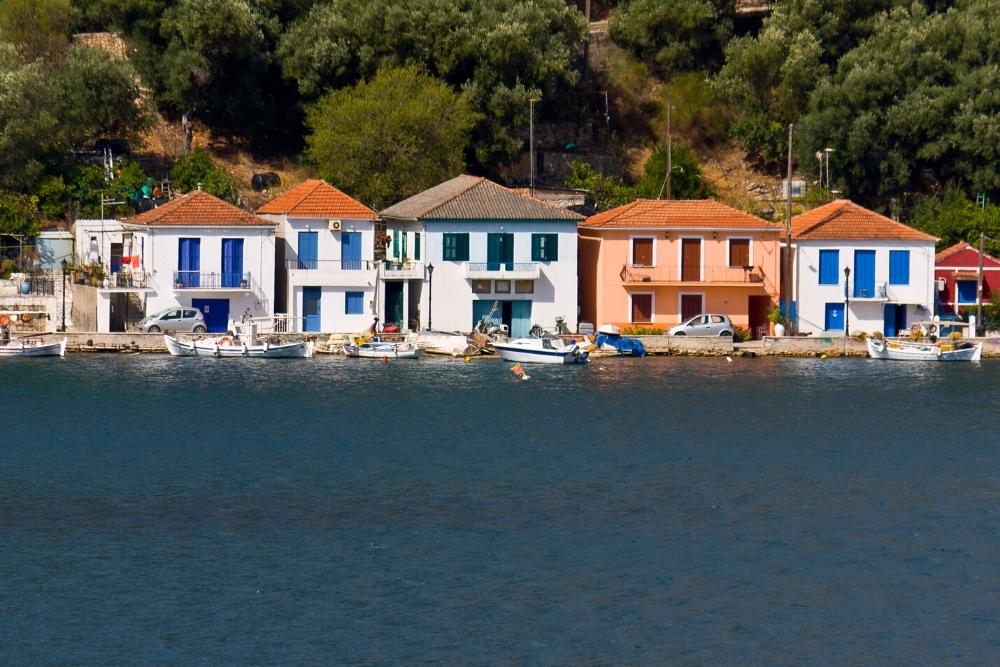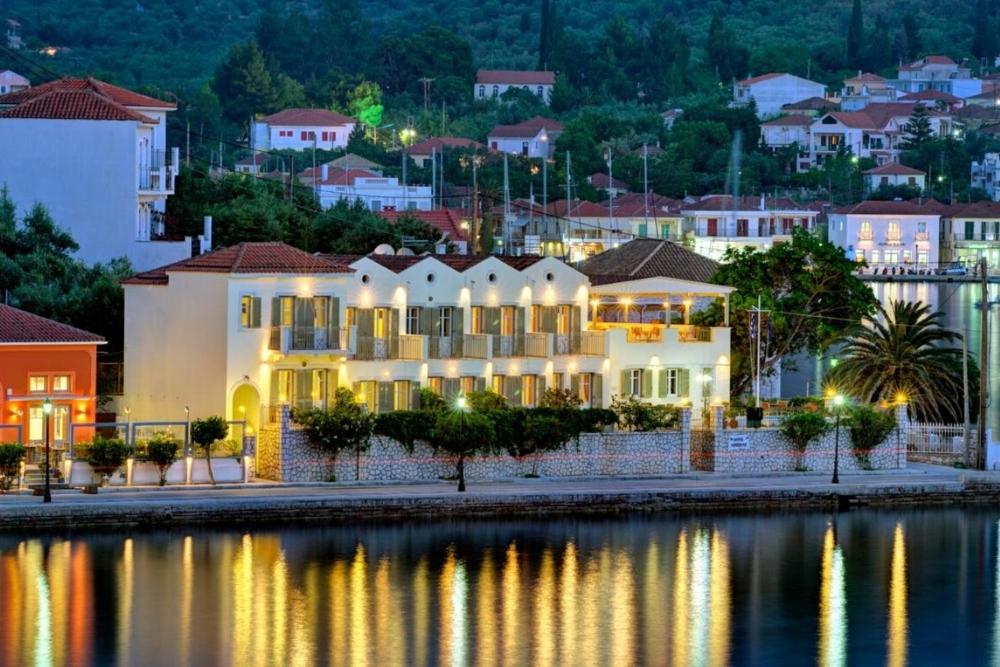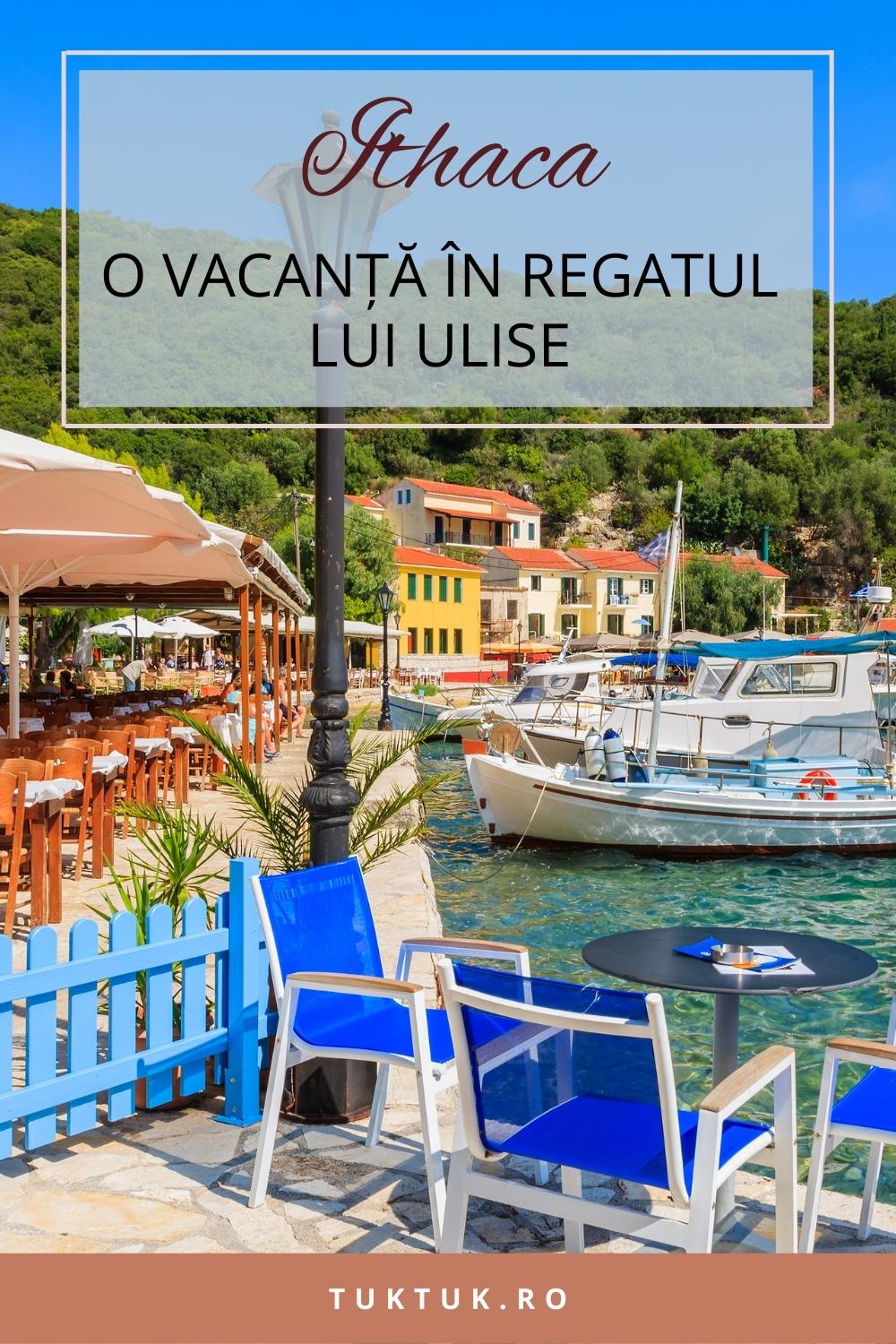When we say Ithaca, Homer’s Odyssey immediately comes to mind. Where Odysseus, the hero of the Trojan War, returns home after ten years of battles and adventures among monsters, cyclops, and mermaids to his beloved Penelope, who is waiting in his kingdom, the island of Ithaca. Where can you find it? Ithaca is part of the Ionian Islands, in the Ionian Sea, near a much more touristy island – Kefalonia. You could even say that Ithaca is a smaller, quieter replica of Kefalonia.
Legend aside, Ithaca is an island inhabited since the 2nd century BC, initially ruled by Mycenaeans. During the Hellenistic period and the Middle Ages, Ithaca’s population declined sharply under Venetian rule, and the war with the Turks left the island virtually uninhabited. Today, however, Ithaca island is a picturesque island with a relaxed atmosphere. Ithaca offers secluded beaches and mountain villages steeped in stories and legends for visitors.

Small but very attractive, Ithaca offers visitors the classic elements of a Greek island: beautiful beaches – Filiatro, Gidaki, Sarakiniko – and picturesque villages such as Vathy and Kioni.
What to see and do in Ithaca
There are a few interesting places to visit in Ithaca when the sun feels too hot and you’re bored of sitting on the sand.
Map with the touristic objectives in Ithaca (zoom for details)
Panagia Kathariotissa Monastery

To visit it you basically have to get to the middle of the island. Kathariotissa Monastery is situated at an altitude of 600m, the location offering beautiful views of the island and especially the capital Vathi. It is not known exactly when the monastery was built, but it certainly existed in 1530 and was rebuilt in 1696. The island’s inhabitants believe that the icon of the Virgin Mary inside the monastery was painted by the apostle Luke and is a miracle worker.
The Cave of the Nymphs

According to the legends of Greek mythology, the Cave of the Nymphs was the place where Odysseus supposedly hid the gifts he received from the inhabitants of the island of Scheria on his return to Ithaca. The cave would have had two entrances, one for the gods the other for the ordinary people. Nowadays, you can’t enter the cave, but it’s an experience to watch its entrance given the many legends that feature it.
Vathy

Vathy is the capital of Ithaca island. Located in the southern part of the island, this village is built around a splendid bay. Among the things you can do in Vathy is visit the archaeological museum, which houses many of the artifacts discovered on the island, and admire the paintings depicting Jesus Elkomenos by the famous El Greco, which are in the church of Agios Nikolaos de Xenon.


Those who love museums should stop by the Folklore and Nautical Museum, where they will discover traditional island clothing, embroidery, musical instruments, and tools from the past and photographs from after the earthquake that destroyed the island in 1953. There are many restaurants, bars, cafés, and souvenir shops in the harbor, along with a statue of Odysseus.
Kioni

Kioni is a traditional Ionian village with a picturesque little harbor where boats crowd in the summer. This village was once the base for pirates who wreaked havoc in the eastern Mediterranean. And Kioni’s three deserted mills symbolize its glorious past.
Ithaca beaches
Known for being lapped by turquoise waters and bordered by lush vegetation, Ithaca’s beaches, like everywhere else, fall into two broad categories – secluded beaches and popular, well-landscaped beaches. Ithaca’s most beautiful beaches are:
Filiatro Beach

Those looking for a beach near the capital city of Vathy will end up at Filiatro, just 3 kilometers away. A pebbly stretch of sand with calm waters, ideal for families with children. Set in a beautiful bay, Filiatro welcomes you with a friendly atmosphere, parking spaces, sun loungers, umbrellas, and bars.
Gidaki Beach

Gidaki is a quiet beach on the east coast of Ithaca, accessible only by boat. Visitors can embark from Vathy harbor and arrive at this secluded, pebbly beach framed by white rocks and lush vegetation. The beach has no sun loungers and umbrellas, but there is a café open during the summer months.
Sarakiniko Beach

Crystal-clear waters and two pebbly coves – a classic image of a Greek island, encompassing Sarakiniko Beach, surrounded by the landscape of olive and cypress groves reflected in the blue-green water. Sarakiniko is another quiet beach in Ithaca, also defined by the small harbor of fishermen who leave at dawn to bring in the ‘catch’ found on the local tavernas’ tables.
Other beaches in Ithaca
Other beaches to visit in your vacation in Thaca are Skinos Bay beach, Marmaka beach, Agios Ioannis beach, Dexa beach, Polis beach, Aetos beach, Pisaetos beach, Rachi beach, Minimata beach, Loutsa beach
Best hotels on Ithaca Island
Familia ***
Booking rating: 9.6

Hotel Familia is located in the capital of Vathi, about 1.3 km from Loutsa Beach and 1.4 km from Dexa Beach. Free internet, air-conditioned rooms, terrace. Breakfast is included in the price. Nearby are the harbor, Folklore and Nautical Museum, Archaeological Museum.
Hotel Omirikon ***
Booking rating: 8,3

Located in Vathi, less than 1 km from Loutsa Beach and a 15-minute walk from Minimata Beach, Hotel Omirikon welcomes guests with a shared lounge and terrace, free internet, and a small swimming pool.
Mentor Hotel ***
Booking Rating: 8.3

Located in Vathi harbor, the capital of Ithaca Island, Mentor Hotel is about 15 minutes from the beach and just a few minutes from the village center. It features a roof garden, a cafe bar, and beautiful sea views.
Best restaurants on Ithaca island

Kanenas
An organic menu that supports local producers. Kanenas is located in the village of Stavros. The olive oil comes from its own olive grove, and dishes obviously include seafood and lamb.
Ageri
Located in Frikes harbor, Ageri is a restaurant ‘with a view’ of both the sea and the mountains. It serves traditional Greek dishes, meat, and seafood but interpreted somewhat modernly. The best is the calamari, but it’s worth trying the pork belly.
Yefuri
It is said that the dishes made in the wood-fired oven at Yefuri are simply irresistible. The ingredients here are simple and fresh, with most dishes including home-grown vegetables. Yefuri is located in the village of Platritrias.
How to get to Ithaca Island
There is no airport on the island of Ithaca, the nearest being in Kefalonia. From here (Sami port), you can take the ferry to Ithaca (in Pisaetos), the crossing takes about 20 minutes.
If you are in Athens, you can drive to Patras (210 km), then take the ferry to Ithaca from Patras port (3.5 – 4 hours). If you’re in Lefkada, you can take the ferry from Nidri in summer, arriving in Frikes.
Pin it!


You may also like: Kythira Island, Aphrodite’s fragrance in the Ionian Sea




